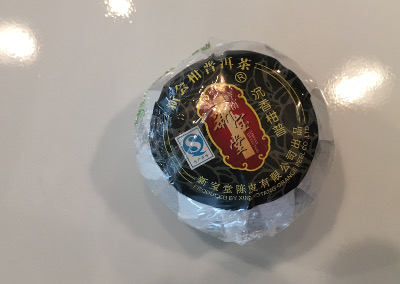 Pu’er Tea 普洱茶 has been in rage for the past decade or so. It is a fully fermented tea produced in the Yunnan area, usually packed tightly as bricks. Some made the bricks into an art form, most assumed the simple circular or rectangular shapes. The well aged ones are so highly prized that many treat them as investments.
Pu’er Tea 普洱茶 has been in rage for the past decade or so. It is a fully fermented tea produced in the Yunnan area, usually packed tightly as bricks. Some made the bricks into an art form, most assumed the simple circular or rectangular shapes. The well aged ones are so highly prized that many treat them as investments.
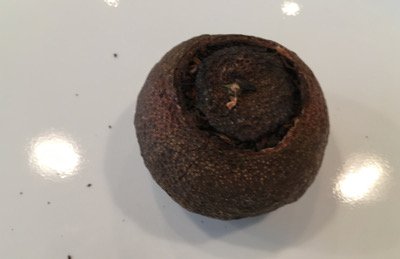
Lately, I received a gift that is a variation that I have never encountered. I learned that people have been drinking this tea for a very long time and the specific brand, XinHui Tang æ–°å¯¶å ‚æŸ‘æ™®èŒ¶, is highly reputable, essentially the standard for the category. This tea, however, is quite hard to find. The gifted, I believe, got it from Hong Kong.
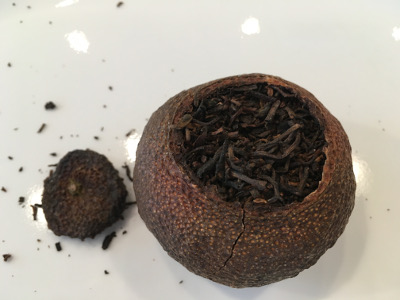
The laborious process to make this tea begins with the unpacking of a high-quality Pu’er tea brick into loose leaves. Next stuff the leaves into an emptied orange — only the peel left that formed a spherical bowl. The orange is of a very specific varietal and chosen for the ripeness, shape, and size. After the stuffing, the whole thing is dried then packaged.
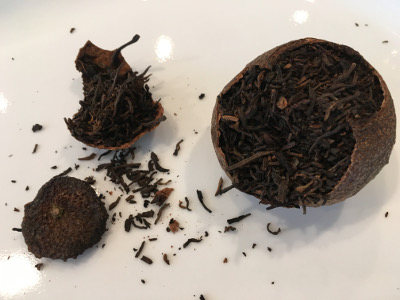
My mother’s hometown, FuZhou ç¦å·ž, is known for producing this medicinal dried orange peels. In Chinese herbal medicine, dried orange peels cure coughing and hypertension. Pu’er tea is also well known for its medicinal properties: calming the nerves, melting away body fat, reducing blood pressure, and even slowing down aging. Drinking this orange pu’er tea is therefore doubly healthy.
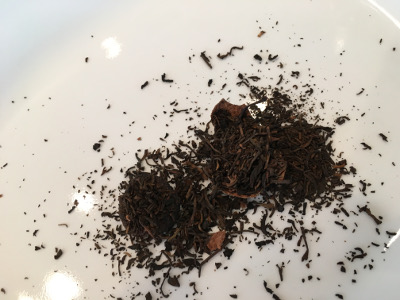
I enjoy pu’er tea pretty much only for its strong aroma and flavors. Natural tea aroma is preferred, but those infused with Jasmine, Chrysanthemum, Osmanthus, or even rose buds are enjoyable as well. I am not sure about the claimed medicinal values. Chinese has been drinking this for a very long time, it cannot be bad for me.
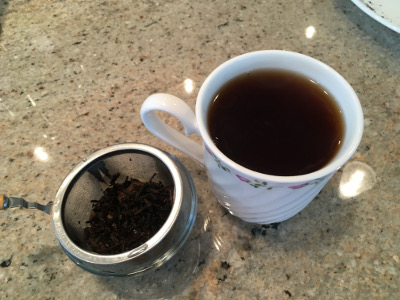
Internet emphasizes the proper steeping method: take both the orange peel and the tea leaves, discard the first pouring of just boiled water, steep the 2nd pouring for 20 seconds and drain to the cup promptly, repeat 3 to 5 times with progressive longer time until all flavors are extracted. Do not prolong the contact time of the tea leaves and hot water.
We drain the 2nd and 3rd pouring into a cup and drank it. It was strong, rich in flavors, and nicely for the nose. The 4th to 6th pouring went into my standard and favorite jar-size cup. I drank it slowing through-out the evening, way after it has cooled down. This tea is good. I like.
To health! Take another sip.
